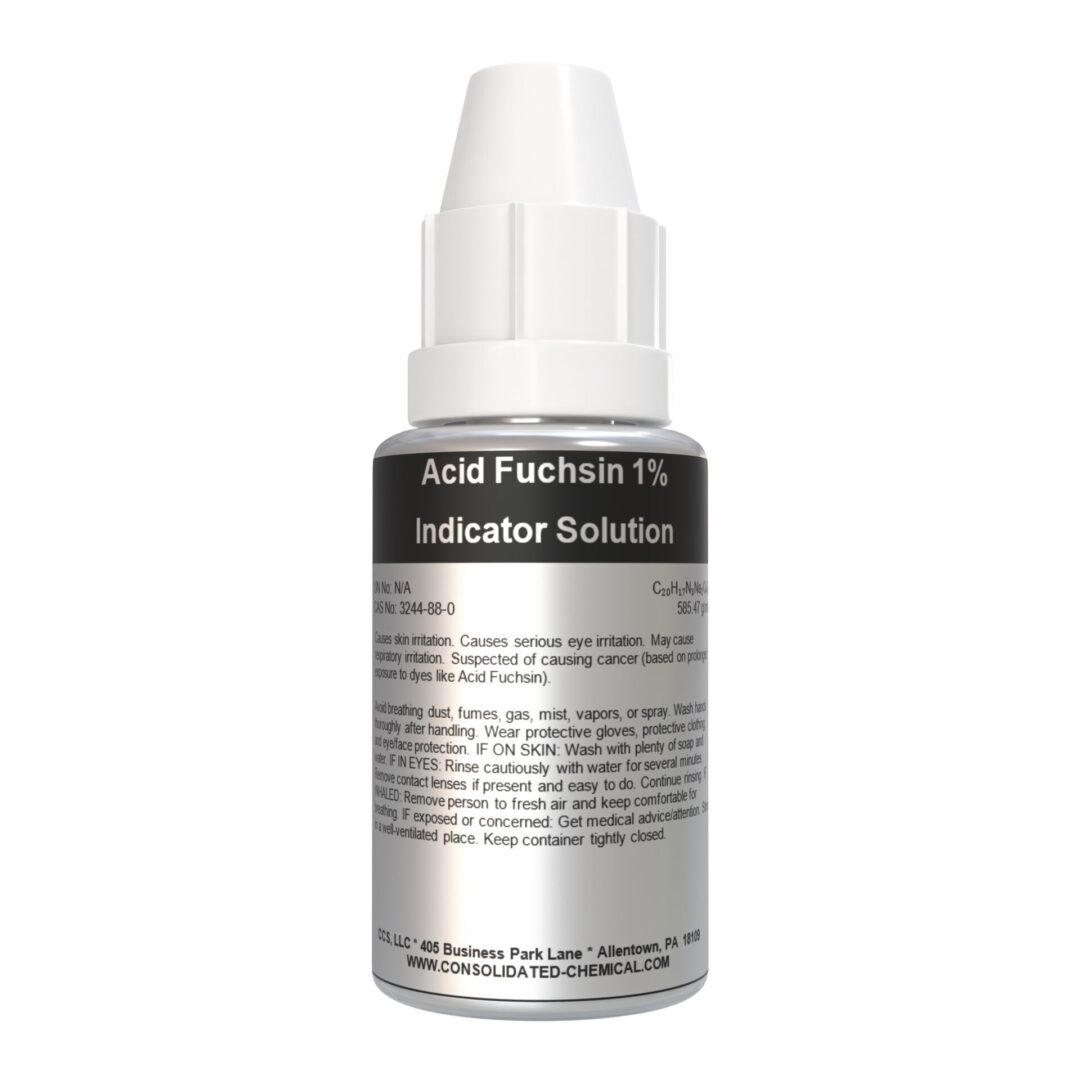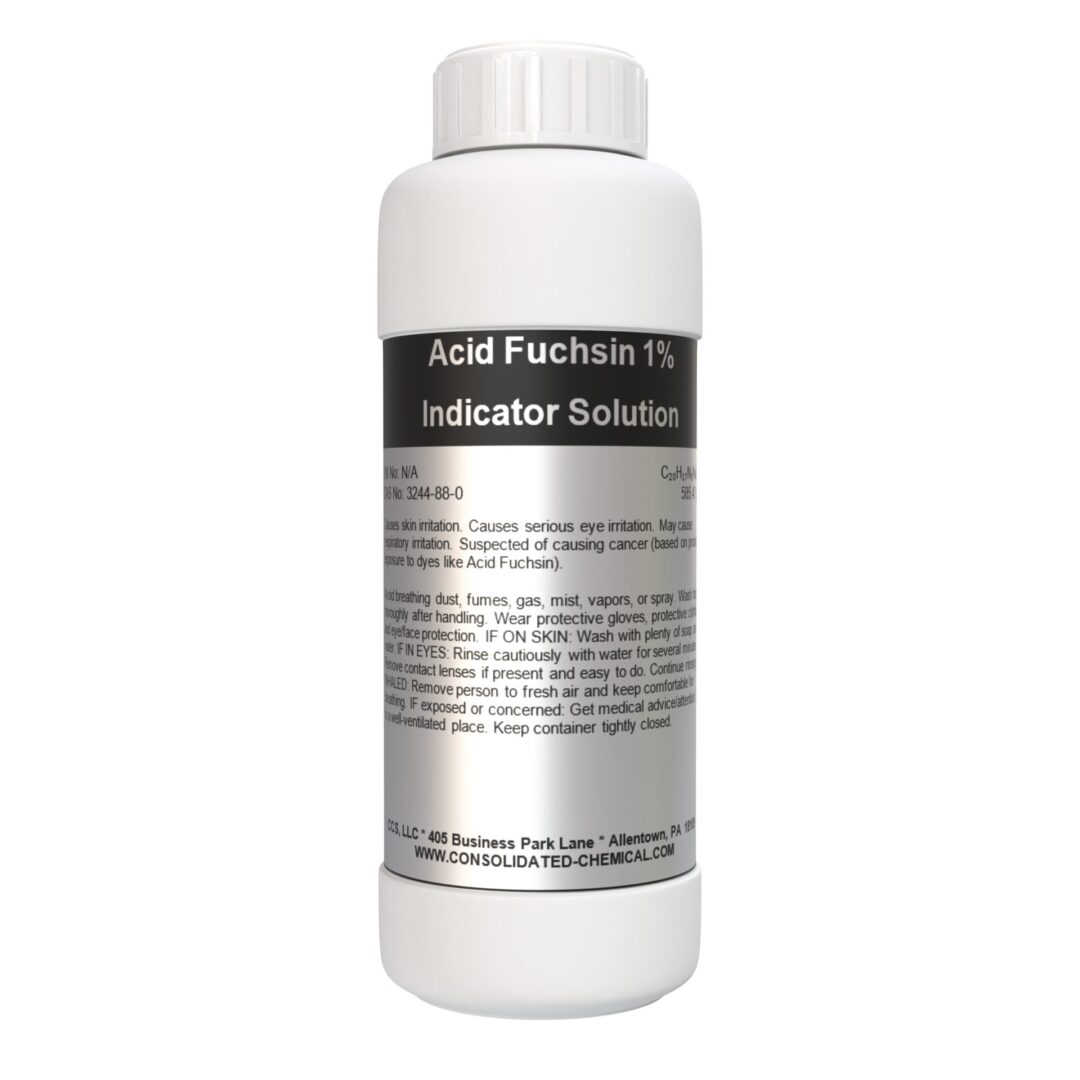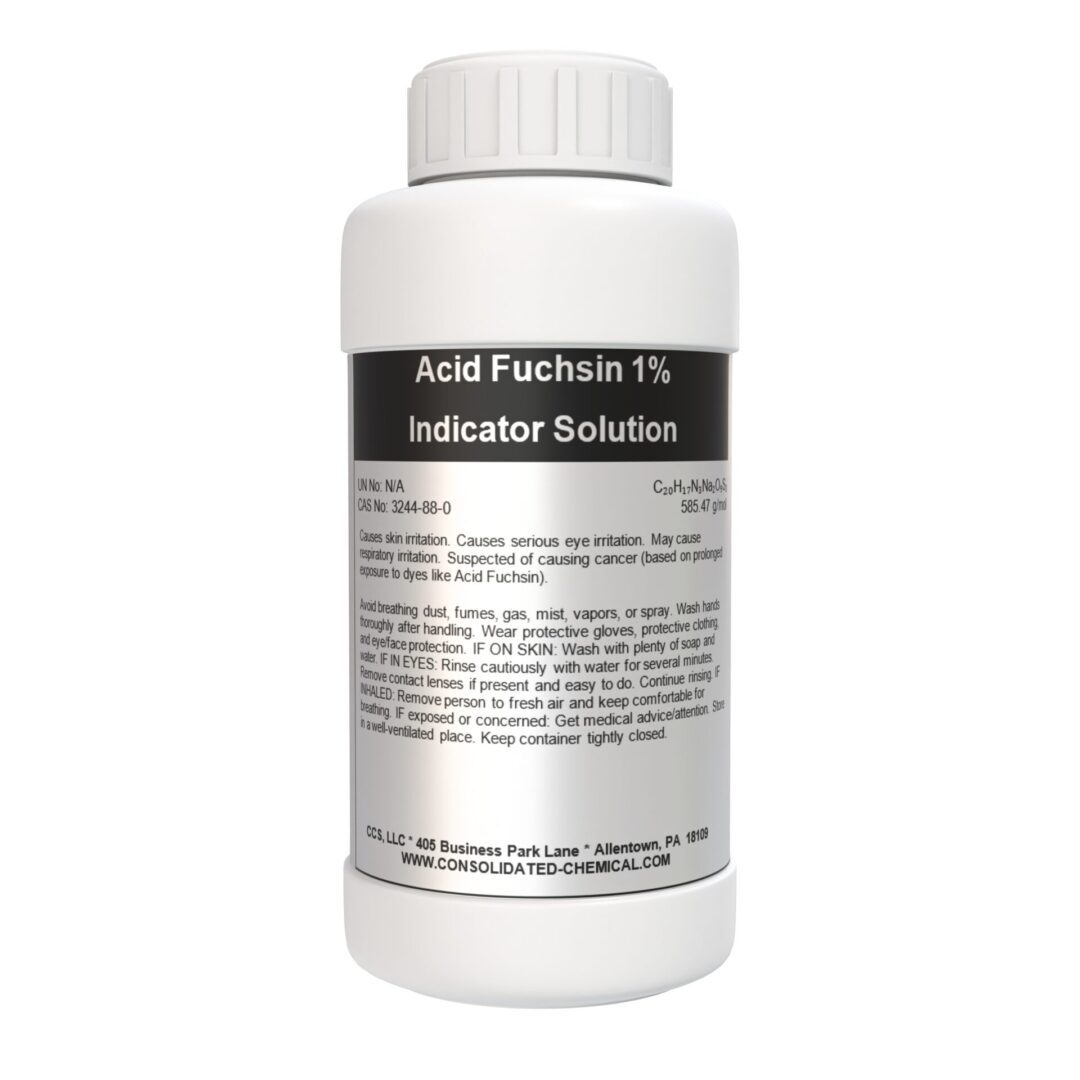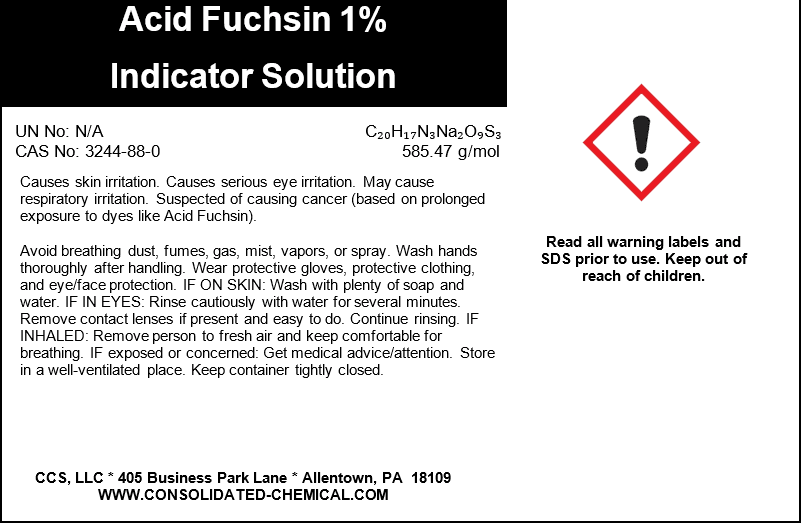Acid Fuchsin 1% Indicator Solution
$9.99 – $54.99
Chemical Information
- Chemical Name: Acid Fuchsin 1% Solution
- Common Names: Acid Magenta, Acid Violet 19
- CAS Number: 3244-88-0 (Acid Fuchsin)
- Molecular Formula: C20H17N3Na2O9S3
- Molecular Weight: 585.54 g/mol
- Appearance: Dark red/magenta liquid
- Odor: Odorless
- Concentration: 1% w/v Acid Fuchsin in aqueous solution
- Purity: Laboratory & analytical grade
Physical & Chemical Properties
- pH Range: Acidic
- Solubility: Soluble in water, slightly soluble in alcohol
- Boiling Point: ~100°C (212°F) (aqueous solution)
- Density: ~1.01 g/cm³
- Viscosity: Low
- Light Sensitivity: Store in a dark container to prevent degradation
Mechanical & Stability Properties
- Combustibility: Non-combustible
- Reactivity: Stable under normal conditions
- Corrosiveness: Non-corrosive but may stain surfaces
Description
Acid Fuchsin 1% Indicator Solution is a laboratory-grade reagent designed for reliable staining and pH indication in microbiology, histology, and analytical applications. Known for its vivid red to magenta color, Acid Fuchsin provides excellent contrast for tissue and bacterial staining, making it indispensable in clinical and research settings. This solution is premixed and ready to use, offering convenience and consistent results for professionals, educators, and students alike.
Applications of Acid Fuschin 1% Indicator Solution:
1. Laboratory & Research Applications
- Histological Staining: Acid Fuchsin 1% is used in Masson’s Trichrome Staining to differentiate collagen, muscle fibers, and cytoplasm in tissue samples.
- Microbiology & Bacteriology: Commonly used for bacterial staining and Gram-negative bacterial identification.
- Cytology & Pathology: Stains cellular components for microscopic examination in diagnostic pathology.
- pH Indicator: Functions as a pH-sensitive dye in biological and chemical assays.
2. Medical & Clinical Diagnostics
- Histopathological Analysis: Identifies abnormal cells, tumors, and tissue structures in medical laboratories.
- Blood Cell Staining: Used in hematological studies to differentiate red and white blood cells.
- Cancer Research & Detection: Plays a role in detecting changes in tissue composition and cellular abnormalities.
3. Industrial & Manufacturing Applications
- Textile Dyeing: Used as a colorant in fabric production, especially for protein fibers like wool and silk.
- Printing Inks & Pigments: Provides bright magenta hues in industrial printing applications.
- Cosmetics & Personal Care: Occasionally used in cosmetic formulations, hair dyes, and beauty products.
4. Environmental & Water Quality Testing
- Pollution Testing: Applied in water quality assessments to track contaminants and pollutants.
- Dye Tracer Studies: Used in fluid movement studies, leak detection, and hydrology research.
5. Food & Beverage Industry
- Food Coloring Research: Used in food-grade dye studies and testing for synthetic colorants.
- Beverage Testing: Applied in quality control and safety testing for food and drinks.
6. Chemical & Pharmaceutical Applications
- Chemical Synthesis: Used as an analytical reagent in organic and inorganic chemistry.
- Pharmaceutical Research: Supports drug formulation testing and quality control.
- Biochemical Assays: Utilized in protein and enzyme analysis.
Storage
- Store in a cool, dry, and well-ventilated area.
- Keep away from direct sunlight and strong oxidizers.
- Store in sealed, chemical-resistant containers.
Handling
- Use protective gloves, safety goggles, and lab coats when handling.
- Avoid skin contact and inhalation of vapors or mist.
- Work in a well-ventilated environment or fume hood.
Safety
- May cause irritation to the skin, eyes, and respiratory system.
- Avoid ingestion or inhalation; handle with care.
- Follow OSHA, EPA, and laboratory safety regulations.
- Material Safety Data Sheet (MSDS) available upon request.
Additional information
| Size | 60mL Dropper (2 Fl Oz), 500mL w/ Dropper (16 FL Oz), 1000mL w/Dropper (32 Fl Oz) |
|---|
Related products
-
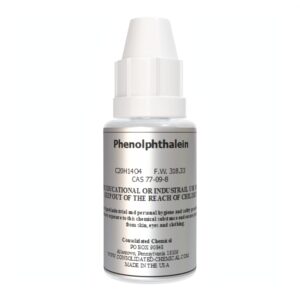
Phenolphthalein Indicator w/ Dropper Bottle – Lab Grade
$9.99 – $34.99 Select options This product has multiple variants. The options may be chosen on the product page -
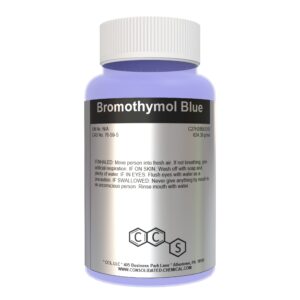
Bromothymol Blue Indicator | High-Purity Reagent Grade
$19.99 – $60.00 Select options This product has multiple variants. The options may be chosen on the product page -
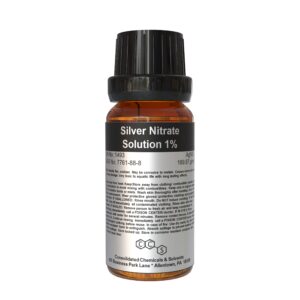
Silver Nitrate Solution 1% | Reagent Grade
$10.50 Select options This product has multiple variants. The options may be chosen on the product page -

Nitric Acid 70% – ACS Grade Corrosive Acid
$19.99 – $89.99 Select options This product has multiple variants. The options may be chosen on the product page

